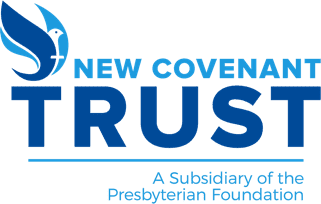
The $1.7 trillion omnibus spending bill signed into law by President Biden in December included provisions dubbed “SECURE Act 2.0.” This law’s language builds on the Setting Every Community Up for Retirement Enhancement (SECURE) Act passed in 2019. Through more than 90 provisions, SECURE Act 2.0 presents some significant, welcome changes for retirement planning.
Here are a few of the bill’s key changes, and how they may impact your financial and tax planning.
Improved Retirement Catch-up
Catch-up provisions are designed to allow people over the age of 50 to make additional tax-advantaged contributions to their Individual Retirement Accounts (IRAs) or 401(k)s.
The changes in SECURE 2.0 seem to acknowledge that more people are working later and may not have been able to save in their younger, lower-earning years, especially if they were raising children. The increased catch-up limits offer people the ability to bolster their retirement fund before they leave the workforce.
In 2023, qualifying individuals will be able to make catch-up payments of $7,500 ($1,000 more than the 2022 limit). More importantly, starting in 2024, the annual catch-up amount will be adjusted based on the reported inflation rate.
Also starting next year, catch-up provisions will increase even more significantly for qualified individuals who are between 60 and 63 years old.
Changes to Required Minimum Distributions (RMDs)
The RMD is just what it sounds like, a minimum amount that plan owners are required to take out of their retirement accounts each year, after reaching a certain age. Managing the distribution strategy can be challenging, and SECURE Act 2.0 offers additional options:
- The RMD starting age increases from 72 to 73, effective 2023. It will increase to age 75 in 2033. If you have already scheduled your RMD, be sure to consult with your advisor before making adjustments.
- Surviving spouses may elect to be treated as the deceased plan owner for RMD purposes.
- The penalty for failing to take a RMD is reduced 25% from 50% This can be further reduced to 10% when the failure is corrected in a timely manner.
- The RMD for qualifying Roth accounts is eliminated starting in 2024.
Be sure to take a broad view of your personal and family situation. The longer you delay distributions, the larger they will need to be, which will impact your taxes.
Additional Qualified Charitable Distribution (QCD) Options
The QCD is an IRS incentive for generosity. Each year, an IRA owners age 70 ½ or older can make QCDs of up to $100,000. Not only does this amount count toward the RMD for the year of the gift, but it is also exempt from the donor’s taxes — a win-win-win.
This amount can be a single large gift, or multiple smaller gifts made directly from the retirement plan to a qualified charity, like the Presbyterian Church (U.S.A.) Foundation.
Starting in 2024, the annual QCD amount will be indexed for inflation. SECURE 2.0 also expands the QCD by allowing a one-time transfer of up to $50,000 to fund a charitable remainder annuity trust (CRAT), a charitable remainder unitrust (CRUT), or an immediate charitable gift annuity (CGA). This amount can be increased to $100,000 if funded by the IRAs of both spouses.
The income beneficiaries of qualifying CRATs or CRUTS can only be the IRA owner and his or her spouse. CGAs funded by a QCD must have payments beginning no less than one year after funding, and such payments are established at a fixed rate of not less than 5%.
Enhanced Emergency Distributions and Emergency Funds
If you need to withdraw money from your 401(k) or pre-tax retirement account, you typically have to pay a 10% penalty on any distributions, in addition tax penalty.
SECURE Act 2.0 makes it possible to withdraw up to $1,000 without penalty as an emergency distribution, with the option to repay it within three years. However, you cannot take any other distributions within that three-year period until the original money is repaid.
Conversion of Qualified 529 Plans to Roth IRAs
Beginning next year, SECURE Act 2.0 allows unused funds from a qualified college savings plan (529 accounts) to be transferred to a Roth IRA free of tax or penalties. This provision offers some peace of mind for parents concerned about having to make a non-qualified withdrawal from a 529 plan if not all the funds were used.
However, there are several rules around this provision, including:
- The 529 must have been established at least 15 years prior to the conversion
- The Roth conversion amount is limited to $35,000 per beneficiary
- The contribution and amount earned in the last five years are not eligible for transfer
Additional Special Distribution Provisions
Generally, taxable distributions from a retirement plan, including an IRA, before age 59½ are subject to a 10% excise tax unless an exception applies. SECURE Act 2.0 defines, clarifies or makes permanent a number of exceptions to that excise tax. The details are too numerous for this post, but be aware that many “life events” will qualify.
Some of the most significant changes address domestic violence victims, federally declared disaster victims, terminally ill individuals, and birth and adoption expenses. If you’ve had a major life event and are considering an early (prior to the age 59 ½) withdrawal, be sure to contact your financial advisor and retirement plan administrator.
More Information to Come
These are just a few of the taxpayer-friendly changes to retirement accounts that are being ushered in by SECURE Act 2.0. Additional information will become available as the IRS and other agencies develop the policies and processes to fully implement the provisions in this legislation.
As always, please free to reach out to us for all of your financial planning needs at 800-858-6127, Ext. 6.
*NOTE: NCTC does not provide tax or legal advice. Investment products such as stocks, bonds and mutual funds are: NOT FDIC INSURED | NOT BANK GUARANTEED | MAY LOSE VALUE | NOT A DEPOSIT | NOT INSURED BY ANY FEDERAL AGENCY | NOT GUARANTEED BY NEW COVENANT TRUST COMPANY (NCTC)
